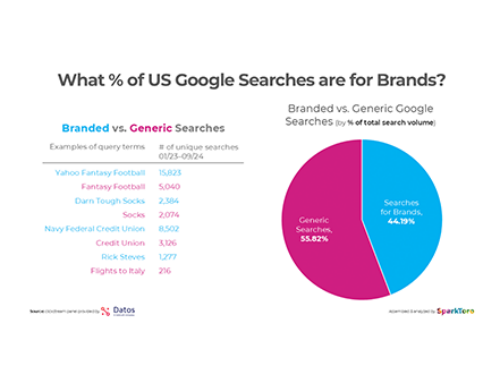Creating better audience segments outside of Meta’s (Facebook and Instagram) built-in options requires a thoughtful, data-driven approach. Here’s a guide on strategies and tools you can use to refine your audience segmentation:
1. Leverage First-Party Data
- Website Analytics: Use tools like Google Analytics, Mixpanel, or Segment to understand visitor demographics, behavior patterns, and key engagement metrics.
- CRM Data: Integrate data from customer relationship management (CRM) systems (like Salesforce or HubSpot) to build segments based on customer profiles, purchase history, and engagement levels.
- Email Engagement: Segment audiences by open rates, click-through rates, and interactions with email campaigns to create audiences that show interest in different types of content or offers.
- On-Site Actions: Track specific actions on your website, such as completing a form, clicking on a specific product, or viewing a particular category, and create segments around these behaviors.
2. Use Lookalike Modeling with Third-Party Tools
- Google Analytics Audiences: If your site uses Google Analytics, you can create segments based on user behavior and sync these audiences with Google Ads. Google’s audience insights provide additional information to help identify new, similar audiences.
- Data Enrichment Platforms: Use platforms like Clearbit or FullContact to enhance your data. These platforms can append demographic, firmographic, and technographic data to your user profiles, allowing you to build more granular segments.
- Customer Data Platforms (CDPs): CDPs like Segment or Amperity allow you to aggregate and standardize data from various sources, providing a comprehensive view of each customer profile. You can build custom audiences based on behaviors, demographics, and interests using this holistic view.
3. Incorporate Behavioral Data for Psychographic Segmentation
- Purchase History and Recency-Frequency-Monetary (RFM) Analysis: Segment audiences based on their past purchases, including purchase frequency, recency, and average order value.
- Social Listening: Use tools like Sprout Social, Brandwatch, or Mention to capture trending conversations and audience interests across social media. Insights into what topics resonate with your audience can help create segments based on psychographic traits.
- Website and App Interactions: Look for recurring patterns in on-site and in-app interactions, such as product views, add-to-cart actions, and time spent on content.
4. Survey and Poll Data for Deeper Insights
- Custom Surveys: Create custom surveys using tools like SurveyMonkey or Typeform to gather data directly from users on their interests, preferences, and motivations.
- Post-Purchase Surveys: These can help determine customer satisfaction, motivation for purchase, and likelihood to repurchase, which can be used to build segments for loyal customers, deal-seekers, or product enthusiasts.
- Net Promoter Score (NPS): Use NPS data to identify brand advocates who can be nurtured further or engaged differently from other segments.
5. Utilize Programmatic Data Sources
- Programmatic Platforms: If you’re using demand-side platforms (DSPs) like The Trade Desk or DV360, they provide access to vast third-party data sets that can help you refine audience segments based on broader market behaviors.
- Data Providers: Consider using data providers like Nielsen or Acxiom that offer access to data on consumer behavior and interests beyond social media, helping you identify segments based on lifestyle, media consumption, or brand affinities.
6. Build Predictive Models for Segmentation
- Lookalike Modeling: If you have a set of high-value customers, use machine learning to build lookalike models based on demographic, psychographic, and behavioral data.
- Churn Prediction Models: Use historical customer data to build churn prediction models, allowing you to create segments for retention-focused campaigns.
- Propensity Modeling: Predict the likelihood of various actions, such as purchases or upgrades, to build segments that are more likely to convert on specific offers or products.
7. Test and Refine Segments Continuously
- A/B Testing: Run A/B tests across different segments to validate assumptions and see what messaging resonates best. Platforms like Optimizely or Google Optimize can help with this.
- Multivariate Testing: Experiment with different variables across audience segments to optimize for messaging, channel, and timing.
- Performance Monitoring: Track the performance of each segment to refine targeting and messaging continuously. Google Analytics, HubSpot, and custom dashboards can help you visualize engagement and conversion metrics by segment.
8. Expand with Contextual and Interest-Based Targeting
- Content Consumption Patterns: Partner with content platforms (like Outbrain or Taboola) that use contextual targeting. This allows you to reach audiences based on the types of content they consume, offering insights into their interests and mindset.
- Keyword and Topic Targeting: Use Google Ads or Microsoft Advertising to target users based on specific keywords, interests, or topic-based segments outside of Meta’s ecosystem.
- Influencer and Partnership Audiences: Consider running campaigns with influencers whose audiences match your desired segments, allowing you to reach similar audiences based on shared interests.
By combining these approaches, you can create audience segments that are more tailored to your goals, effectively expanding your reach and enhancing engagement across channels beyond Meta.


